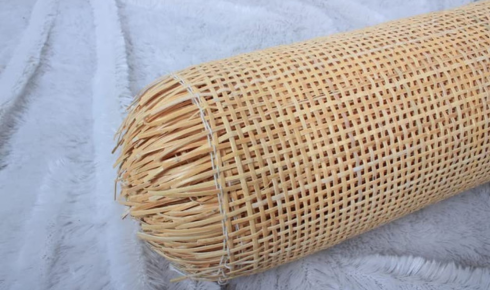In the world of interior design and furniture crafting, natural materials have always been prized for their durability, aesthetic appeal, and sustainability. Among these, rattan and cane stand out for their versatility and timeless charm. Products like rattan jali and cane rolls have become increasingly popular in modern homes, commercial spaces, and creative projects, offering a perfect blend of functionality and elegance.
Rattan jali refers to intricately woven panels made from rattan strips. These panels are commonly used in furniture, partitions, wall panels, and decorative screens. The weaving patterns can vary from simple geometric designs to elaborate, ornate layouts, making rattan jali a versatile material for both traditional and contemporary interiors. Its open-weave structure allows for air circulation, making it ideal for furniture backs, cabinets, and room dividers. Beyond practicality, rattan jali adds a sophisticated, artisanal touch to any space, showcasing the craftsmanship and attention to detail involved in its creation.
One of the most common forms of rattan material is the cane roll. A cane roll is a long, flexible sheet of rattan that has been carefully processed and woven into a uniform pattern. Cane rolls are widely used by furniture makers, interior designers, and DIY enthusiasts to create chair backs, cabinet doors, drawer panels, and decorative elements. The flexibility of cane rolls allows them to be cut and shaped to fit various furniture designs, while their durability ensures that the finished product remains strong and long-lasting.
Using rattan jali and cane rolls offers multiple benefits. First, they are lightweight yet sturdy, making furniture easier to handle and rearrange. Second, they provide a natural, warm aesthetic that complements a wide range of décor styles, from rustic and tropical to modern minimalist. Third, they are eco-friendly, as rattan and cane are renewable resources that grow quickly and require minimal processing compared to synthetic alternatives. By choosing these materials, homeowners contribute to sustainable living while enjoying the charm of handcrafted furniture.
Rattan jali is particularly appreciated for its decorative appeal. It can be used as room dividers in open-plan spaces, adding privacy without blocking light or airflow. It is also used in doors, windows, and ceiling panels, providing a natural, airy look while maintaining structural integrity. Furniture with rattan jali elements, such as chairs, sofas, and headboards, becomes a statement piece in any room, combining both comfort and elegance.
Cane rolls are equally versatile. They are often used in combination with solid wood or metal frames to create customized furniture that meets specific design requirements. From chairs and benches to cabinets and shelves, cane rolls offer flexibility in design while retaining strength and resilience. Additionally, cane rolls can be used in decorative crafts, lighting fixtures, and wall hangings, offering endless creative possibilities for designers and homeowners alike.
Maintenance of rattan jali and cane rolls is simple, which adds to their appeal. Regular dusting and occasional cleaning with a damp cloth keep the material looking fresh. Avoiding prolonged exposure to excessive moisture or direct sunlight prevents warping and ensures longevity. With proper care, furniture and décor made from rattan jali and cane rolls can last for decades, maintaining both their functionality and visual charm.
In conclusion, rattan jali and cane roll products are more than just materials—they are versatile solutions that bring elegance, sustainability, and craftsmanship to modern living spaces. Whether used in furniture, decorative panels, or creative DIY projects, they offer durability, style, and eco-friendly benefits that few other materials can match. Investing in rattan jali and cane rolls ensures a timeless, natural appeal while supporting skilled artisans and sustainable practices.



